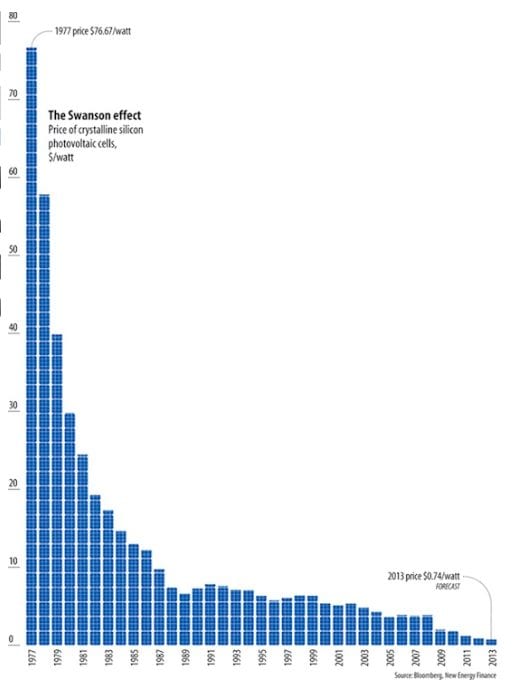The price of solar photovoltaic cells has dropped 99% in the past quarter century. So in an increasing number of markets around the country, solar is at or very close to grid parity.
Consider Colorado. The Denver Business Journal reported last monththe results of months-long competitive bidding process:
Xcel Energy Inc. is proposing to triple the amount of utility-scale solar power on its grid in Colorado, and add another 450 megawatts of wind power….
If approved, the plan would cut Xcel’s carbon dioxide emissions by more than one-third compared to 2005 levels.
David Eves, the CEO of Xcel’s Colorado subsidiary in the state told the Journal solar power is now cost-competitive with natural gas-fired generation:
“This is the first time that we’ve seen, purely on a price basis, that the solar projects made the cut — without considering carbon costs or the need to comply with a renewable energy standard — strictly on an economic basis.”
If solar power is seeing this kind of growth strictly on a cost basis, imagine how fast it would be growing if carbon dioxide had a price reflecting its actual harm to the environment and human health.
The Journal reports that Xcel’s proposed plan includes:
- 170 megawatts of big, utility-scale solar power plants to be built in Colorado — separate from Xcel’s proposal to add 42.5 megawatts of small-scale solar power the utility proposed in July.
- 450 megawatts of new Colorado wind power, bringing the company’s total wind-based power supply in Colorado to 2,650 megawatts.
- 317 megawatts of “low-cost” power from natural gas plants the utility will use when the wind stops and the sun goes down.
Much of the credit for the sharp drop in solar prices goes to state and federal governments here and around the world for decades of R&D support, PV purchases, subsidies, and renewable energy standards.
Those who say renewables are not ready for mass deployment, that we need decades more research or more breakthroughs before renewables are ready, are living in the past. The future is now.









